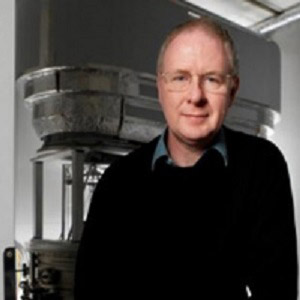
Dr Ian Robinson is an NPL in Fellow in Electrical Metrology. Ian Robinson joined NPL in 1976 from Oxford University and worked on dc and low-frequency measurements of resistance, capacitance, and voltage. He worked on the first moving-coil Kibble (watt) balance, which played a key part in determining a worldwide consensus value for the maintained volt (or ampere) in 1990, by measuring electrical power in terms of the base units of the SI. This work has had many spin-offs including a low-noise optical fibre data bus, which is used in a number of NPL electrical measurement instruments used in measurement laboratories around the world. With Bryan Kibble he built the NPL Mk II Kibble balance which was aimed at the precise measurement of the Planck constant to contribute to the redefinition of the kilogram. In 2017, this apparatus, working in Canada, produced the lowest uncertainty result contributing to the redefinition of the kilogram. The new definition was implemented in 2019 resulting in the kilogram being linked to a fixed numerical value of the Planck constant.
He has also worked on Shock tubes which produce calculable pressure steps, with ns rise times, for the calibration of high-speed pressure sensors.
Ian has published or presented over 50 papers and articles and chaired the Consultative Committee for Electricity and Magnetism working group on electrical methods to monitor the stability of the kilogram until its work was completed by the redefinition of the kilogram.
He was awarded the 2019 Sir Harold Hartley medal from the Institute of Measurement and Control and, in 2021, was awarded an OBE for services to Measurement Science.
Ian's main focus is on leading a team to build the next generation Kibble balance. This depends on new ideas which make it smaller and easier to operate than its predecessors whilst maintaining the required high accuracy. He hopes that copies of this balance will be used by laboratories in other countries to make their own independent mass measurements, linked to fundamental constants, and contribute to a stable, robust worldwide mass scale.